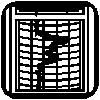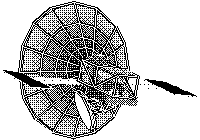Typically, precision oscillators are individually tested by the manufacturer for frequency drift over time and temperature, output level and spurious signals, phase noise (when specified), tuning range, and warm-up characteristics. Additional tests may be performed for a wide range of requirements including:
 Shock and Vibration Testing
Shock and Vibration TestingUnits are often tested to ensure survival in brutal environments and to determine the performance degradation in the presence of vibration. Specified vibration is usually random, expressed as a power spectral density but sine vibration is occasionally invoked. Wenzel Associates has the in-house capability to measure vibration induced phase-noise.
 Altitude and Space Testing
Altitude and Space TestingOscillators may be tested in a vacuum chamber to determine the detrimental effect of low pressure and the corresponding drop in thermal conductivity. Wenzel Associates has the in-house capability to test small oscillators over temperature down to about 10 microtorr.
Oscillators are often exposed to several extreme temperature swings without power applied to uncover mechanical flaws. Oven oscillators, especially flask insulated designs, are somewhat immune to thermal shock since the ovens usually have significant thermal mass well insulated from the ambient. Consequently, much of the oscillator circuitry may not see the rapid temperature change or even the temperature extremes if the test is performed too quickly. Thermal shock tests can also incorporate a start-up test to ensure that the oscillator will start at the temperature extremes.
 Radiation Hardness
Radiation HardnessOscillators traveling into space may encounter significant levels of radiation. Usually radiation testing is difficult to accomplish and, as an alternative, the oscillators are designed using guidelines. Swept-quartz crystals are required and the design is analyzed for the detrimental effects of significant transistor beta decreases and high leakage currents. Many component types are avoided and current limiting resistors are added to prevent damaging radiation induced currents.
 Radiated and Conducted Emissions
Radiated and Conducted EmissionsRadiated emissions may be tested by specially equipped labs but these tests are frequently performed on complete instruments instead of individual components. Conducted emissions are easily performed with a spectrum analyzer and a few additional components. Since most precision oscillators are sealed in metal enclosures, the conducted emissions test is sufficient to determine the level of RF leakage.
Minimal susceptibility to acoustical noise, magnetic fields, humidity, or even ambient light may appear as a special requirement.
Test data for each oscillator may range from a simple attributes sheet to a completed test procedure with supporting documents and component tracking. The level of documentation depends on the customer’s particular program.